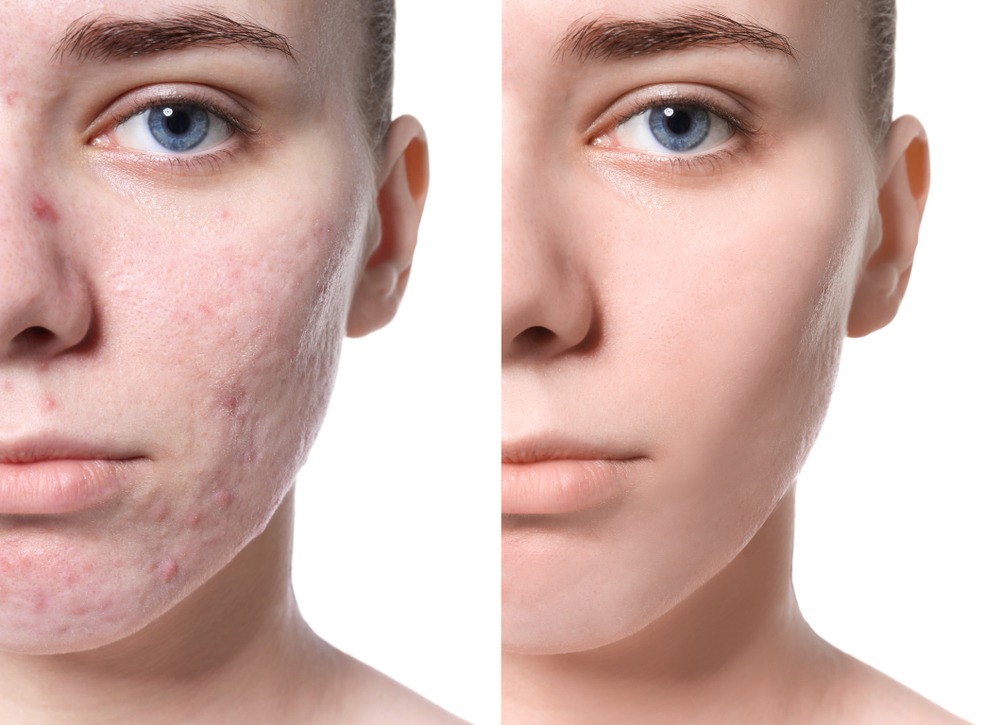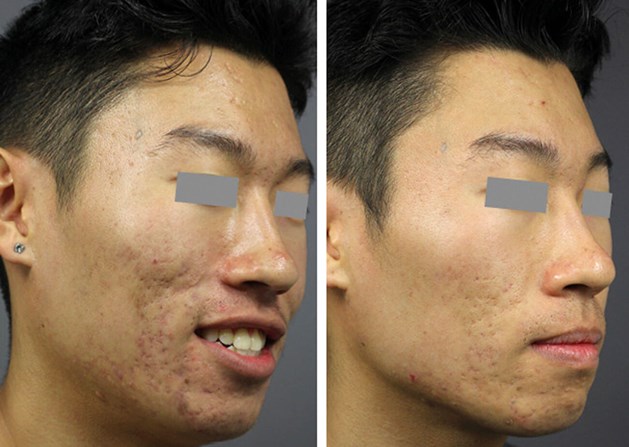Exploring Skin Disease: Recognizing and Treating Acne Scars for Healthier Skin
Acne scars stand for a substantial concern for people looking for to keep healthy and balanced skin, as they can affect both appearance and self-esteem. Understanding the various types of marks, from atrophic to hypertrophic, is crucial for figuring out ideal therapy options. While specialist interventions like chemical peels and microneedling can be efficient, the importance of customized care strategies can not be overemphasized. In addition, preventative steps play a vital function in lessening future scarring. As we explore these elements, one must consider just how the appropriate strategy can result in transformative outcomes.
Recognizing Acne Marks

The body's all-natural recovery procedure can lead to either atrophic marks, which look like anxieties in the skin, or hypertrophic scars, which are increased and result from overflow of collagen. Furthermore, the emotional toll of acne scars ought to not be taken too lightly; lots of people report sensations of humiliation, stress and anxiety, and lowered self-worth. This emotional problem can impact social communications and overall high quality of life.
Resolving acne scars needs a comprehensive understanding of their formation and impact. Awareness of the potential for lasting consequences connected with untreated scars can motivate individuals to look for appropriate therapies. Early intervention and efficient monitoring methods can dramatically improve skin appearance and enhance mental resilience, stressing the value of recognizing the intricacies surrounding acne scars.
Types of Acne Scars
Acne marks can be categorized into unique kinds, each showing distinct qualities and needing specific treatment methods. acne treatment for sensitive skin. The primary sorts of acne marks consist of atrophic, hypertrophic, and keloid marks

Hypertrophic marks, on the other hand, are raised above the skin level and are the result of excessive collagen manufacturing throughout the recovery procedure. They commonly continue to be within the borders of the initial acne sore. Keloid scars are similar but prolong past the initial injury website, forming larger, raised areas that can be scratchy or painful.
Recognizing these sorts of scars is important for picking suitable treatment choices. Various marks may respond better to particular treatments, such as laser treatments, fillers, or medical treatments, emphasizing the significance of a customized approach to acne mark administration.
Identifying Your Marks
When examining the appearance of your skin, it is essential to precisely recognize the type of scars present, as this will educate the most efficient treatment approach. Acne marks generally fall under two groups: atrophic and hypertrophic marks. Atrophic marks, which are one of the most typical, look like clinical depressions or impressions on the skin. These can further be classified right into ice-pick marks, boxcar marks, and rolling scars, each showing distinct features and calling for various techniques for analysis.
Hypertrophic scars, on the various other hand, are elevated and take place because of excessive collagen production during the healing process. Recognizing the specific functions of your scars-- such as deepness, appearance, and size-- is important for correct recognition (skin rejuvenation treatments). In addition, think about the distribution of marks throughout your skin, as this can show the seriousness and duration of the acne condition
Involving with a dermatologist can supply beneficial visite site understandings into the nature of your marks, aiding in the distinction between numerous types. A comprehensive understanding of your scars will ultimately lead to a much more tailored and effective therapy strategy, guaranteeing a more clear and healthier skin tone.
Treatment Choices Available
Recognizing the certain kind of acne marks present on your skin prepares for discovering effective therapy alternatives. Typical kinds of acne scars consist of atrophic (clinically depressed), hypertrophic (raised), and post-inflammatory erythema.
For atrophic scars, options such as chemical peels, microneedling, and laser resurfacing are widely used. Chemical peels off make use of acids to get rid of the external layer of skin, advertising brand-new cell growth. Microneedling entails little needles that create micro-injuries, boosting collagen manufacturing. Laser resurfacing targets harmed skin cells, boosting appearance and tone.
Hypertrophic scars can be treated with corticosteroid injections to flatten the scar or laser treatment to lower inflammation and enhance appearance. Silicone gel sheets and stress dressings may likewise aid in managing increased scars.
Additionally, facial fillers can briefly complete clinical depressions from atrophic marks, while surgical excision may be suitable for extreme situations. Each treatment choice has its advantages and factors to consider, making it important to speak with a dermatologist. They can offer personalized suggestions based on the type and seriousness of your marks, as well as your skin kind and general health and wellness.
Tips for Avoidance
Reliable avoidance techniques can considerably minimize the probability of establishing acne marks. The very first step is to keep a regular skin care routine that includes gentle cleaning, peeling, and moisturizing. Using non-comedogenic items assists protect against clogged pores, which can intensify acne. Additionally, integrating topical treatments having salicylic acid or benzoyl peroxide can effectively lessen and take care of breakouts swelling.
Staying clear of the urge to pop or select acne lesions is critical, as this can cause much deeper skin damage and boost the risk of scarring. Instead, consider making use of a chilly compress or over the counter therapies to decrease swelling and inflammation.
Sunlight security is one more essential element of prevention; ultraviolet (UV) rays website here can darken marks and prevent the recovery procedure. Applying a broad-spectrum sunscreen with at the very least SPF 30 daily can shield the skin and advertise even healing.
Finally, keeping a balanced diet rich in antioxidants, vitamins, and minerals supports skin health and wellness and healing. Remaining moisturized and managing anxiety degrees can also play a significant duty in reducing acne flare-ups. By executing these techniques, individuals can dramatically lessen their possibilities of creating acne marks.
Conclusion
To conclude, understanding and identifying acne scars is necessary for efficient treatment and accomplishing much healthier skin. Various kinds of acne marks, consisting of atrophic and hypertrophic scars, necessitate particular interventions tailored to private demands. Therapy options variety from chemical peels and microneedling to corticosteroid injections, highlighting the significance of speaking with a skin specialist. Furthermore, adopting a gentle skin care routine and safeguarding the skin from UV direct exposure can dramatically add to the avoidance of further scarring and overall skin wellness.
The body's natural healing process can result in either atrophic marks, which show up as depressions in the skin, or hypertrophic scars, which are elevated and result from overproduction of collagen. They are more separated into three subtypes: ice choice scars, boxcar scars, and rolling scars. Acne marks usually drop into two classifications: hypertrophic and atrophic marks. These can better be identified right into ice-pick scars, boxcar marks, and rolling marks, each showing distinctive characteristics and requiring different methods for assessment.
Various types of acne scars, including atrophic and my blog hypertrophic scars, necessitate specific treatments customized to specific requirements.